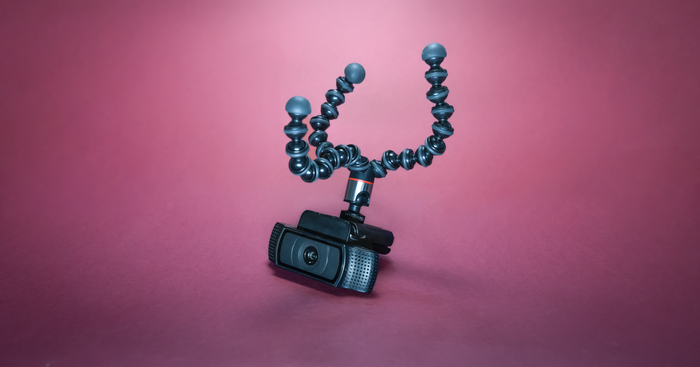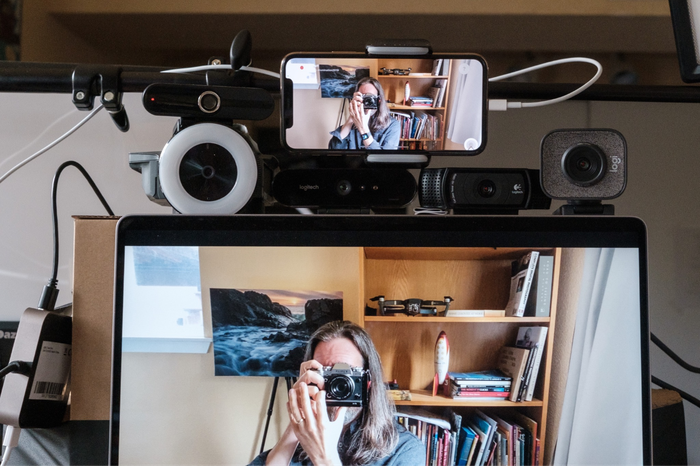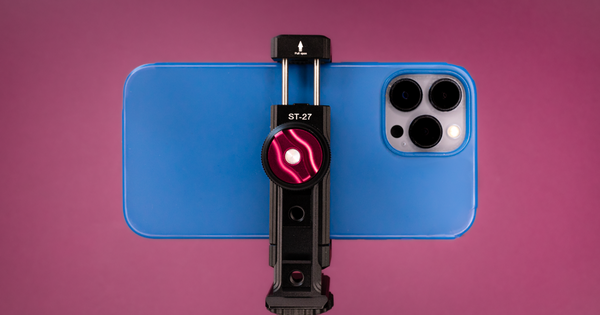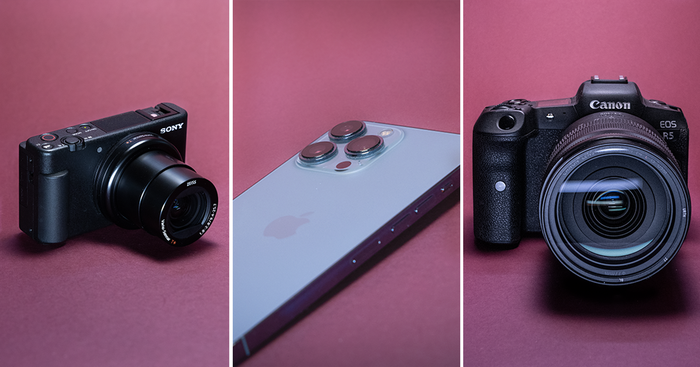ウェブカメラが十分ではない理由

多数のウェブカメラ購入ガイドとレビューを参照し、最も人気のあるモデルをいくつか購入し、さまざまな照明状況でそれらをテストした後、私は厳しい真実から逃れることはできません。良いウェブカメラはありません。評判の良い販売店が推奨するウェブカメラでさえ、低品質の画像を生成します。これは、提供することになっている1つの仕事であることを考えると、重大な失敗です。
不均一な色。吹き飛ばされたハイライト。特に暗い場所での汚れたディテール。手頃な価格のWebカメラ(手頃な価格のハイエンドである100ドル以上)は、文字通り見栄えが悪くなる平凡なソフトウェアに裏打ちされた、不十分で通常は何年も前のハードウェアを使用します。自分の画像を小さくするビデオソフトウェアを使用している場合は、これに気付かないかもしれませんが、通話中の他の人には明らかです。
自分の目で確かめてください。以下のビデオは、市場をリードするWebカメラ(C920、Kiyo、Brio)を同時に、同じ条件下で、iPhoneをベンチマークとして示しています。
- Logitech C920には多くの問題があり、特に露出の問題があります。
- Logitech Brioは動きに追いつくのに苦労しており、肌を滑らかにするフィルターを適用しているようです。
- iPhone Proは、高品質の画像と自然な色を提供し、焦点を合わせるのに苦労しない唯一のオプションです。
なぜウェブカメラはこのようなのですか?結局のところ、現在の「最高の」ウェブカメラが市場に出回って以来、小型カメラ技術は飛躍的に向上しましたが、それはすべて私たちの携帯電話で起こっています。これを説明するために、私は最も人気のあるWebカメラをCamoと比較します。これは、iPhone、iPad、およびiPodtouchのカメラとイメージングテクノロジーを活用して見栄えを大幅に向上させるソフトウェアです。 Camoが写真に含まれていなくても、一流のWebカメラからの出力はまだ不足しています。
それらをテストする
テストのために、私は一流で最も売れているスタンドアロンWebカメラのコレクションと1つの安価な模造品モデルを集めました(どれがどれであるかを推測させます)。表示されている数値は、企業の希望小売価格です。
- Logitech Brio 4K Pro($ 199)
- Logitech StreamCam($ 169)
- Logitech C920($ 80)
- Adwaita 8 MP Ultra HD 4K Webカメラ($ 50)
対照的に、私はReincubate Camoを実行しているiPhoneの小さなコレクションを集めました。これには、私が見つけた中で最も古いサポートされているモデルが含まれています。このアプリは、iPhone5sやiPodtouch6を含むiOS12以降を実行しているすべてのデバイスで実行されます。
- iPhone 11 Pro(私の日常の電話、999ドル)
- iPhone SE(2019モデル、399ドル)
- iPhone 6(2015年、2020年秋に中古でロックを解除して90ドルで購入)
最新のiPhoneモデルは、明らかにWebカメラよりも高価ですが、カメラとして機能するだけではありません。私はそれを除外するつもりはありませんが、ウェブカメラとして使用するためだけに新しいiPhoneを購入する人はいないと思います。誰かがメインの電話を使用したり、使用されなくなった古いモデルを再利用したり、中古モデルを購入したりする可能性が高くなります。テストは16インチMacBookPro(2019モデル)で行われました。
写真に関するいくつかの注意事項:特に明記されていない限り、画像はWebカメラのデフォルト設定を使用してキャプチャされました。 iPhoneはCamoを使用して接続されていましたが、アプリの調整ツールは使用されていませんでした。あなたが見るものはカメラが届けたものです。
彼らが捕らえられた部屋は、2つの窓と薄黄色の壁のある部分的に露出した地下室にあります。部屋の照明には、5000Kデイライトとして販売されている民生用LED電球を備えた天井ランプと1つの装飾的な吊り下げランプが含まれています。言い換えれば、それは自宅で仕事をしたり、ビデオ会議に参加したりするためのかなり典型的な部屋です。
また、特に夜間の撮影時に、より多くの照明を提供するために、外部の15.4インチDazzneデスクマウントLEDビデオライトのペアをセットアップしました。どのショットでそれらがオンにされたかに注意します。後で説明するように、十分な光を利用できるようにすることの重要性を過小評価することはできません。これは、ここで説明するすべてのWebカメラに当てはまります。
ズームはビデオ会議のデファクトスタンダードになっているため、ビデオフィードはプライベートミーティングのズームで表示されました。ズームやその他のサービスでは、使用する帯域幅の量を最適化するためにブロードキャストの解像度が制限されることがあります。そのため、通話の相手側には、同じ画質が表示されない可能性があります。私のテストでは、プライベートコールでのZoomのパフォーマンスは、ストリーミングを行わないQuickTime Playerでのビデオフィードの表示([ファイル]> [新しいムービーの記録]を選択)と同等でした。
最後に、配置:すべてのカメラはノートパソコンの画面の上に設置されているため、カメラを簡単に切り替えることができるため、各モデルの角度がわずかに異なります。今回は完璧な構図に集中していませんでした。

特定のウェブカメラの比較に入る前に、いくつかの普遍的な問題に焦点を当てましょう。
サードパーティのWebカメラの問題
テストされた各Webカメラは独自の方法で問題を抱えていましたが、一般的に言って、次の障害が最も顕著でした。
露出の問題とホットスポット:Webカメラの最初のタスクは、シーンの照明を自動的に考慮し、それに応じて明るさを調整することです。フレームの中央にあるオブジェクト(つまりあなた)が十分に明るくなるようにするために、カメラは通常、他のすべての場所で明るさを上げます。その理由は確かですが、窓やランプがショットに含まれていると、真っ白に吹き飛ばされて視聴者の気を散らす可能性があります。適度に照らされているように見える部屋でも、その光があなたにこぼれ、額や頬骨などの特徴が露出しすぎることも珍しくありません。露出不足のシーンでは毎回明るいシーンを撮影しますが(理由は説明します)、ホットスポットと露出オーバーは単に気が散るだけです。
![8歳のLogitechC920は、今でも最高のWebカメラの1つとして推奨されています。 The 8-year-old Logitech C920 is still somehow recommended as one of the best webcams.]()
8歳のLogitechC920は、今でも最高のWebカメラの1つとして推奨されています。 色の問題とホワイトバランス:ウェブカメラが釘付けにする必要のあるもう1つの自動調整は色の忠実度であり、これは露出と同じくらい問題があります。視聴者の視点から見ると、ホワイトバランス(色温度とも呼ばれます)によって、冷たく見えるかオレンジ色に見えるかが決まります。私は本当に見た目と同じくらいバラ色の頬をしていますか?一体、それは私の実際の肌の色でさえありますか?多くの場合、答えはノーです。
![この比較で最も高価なWebカメラであるLogitechBrioは、ピンクの色合いになる傾向があります。 The Logitech Brio, the most expensive webcam in this comparison, tends toward pink hues.]()
この比較で最も高価なWebカメラであるLogitechBrioは、ピンクの色合いになる傾向があります。 フォーカスの問題:私が見たすべてのWebカメラは、固定焦点範囲(または、マーケティング用語では「一貫した被写界深度のための固定フォーカス」)を備えた安価な名前のないカメラを除いて、被写体を鮮明に保つためのオートフォーカスを提供します。これは、「カメラから十分に離れて、スイートスポットにいる」という意味です。一部のカメラは実際にオートフォーカスを打つことができませんが、他のカメラは動作が遅いです。話しているときに動く傾向がある場合、Webカメラはフォーカスをロックし、それを失い、再び見つけるときに「バウンス」する可能性があります。繰り返しますが、気が散ります。
![この比較で最新のWebカメラはLogitechStreamCamです。 The newest webcam in this comparison is the Logitech StreamCam.]()
この比較で最新のWebカメラはLogitechStreamCamです。 画像の柔らかさ:オートフォーカスが不十分だと画像が柔らかくなる可能性がありますが、原因はそれだけではありません。一部のカメラは、期待する詳細を保持していないか、肌にスムージングを適用しているようです。
![ここでの私の肌の質感は、Brioで撮影したもので、ビデオ会議ソフトウェアの「TouchUpMyAppearance」設定をオンにするのに似ています。 The texture of my skin here, shot with the Brio is more akin to turning on the "Touch Up My Appearance" setting in some video-conferencing software.]()
ここでの私の肌の質感は、Brioで撮影したもので、ビデオ会議ソフトウェアの「TouchUpMyAppearance」設定をオンにするのに似ています。 低照度性能:確かに、低照度の状況はどのカメラにとっても困難であり、Webカメラはさまざまな方法でそれを処理します。ただし、いくつかの理由から、十分な光がない場合、Webカメラは通常ひどいものになります。または、ウェブカメラが十分な光がないと判断した場合は、言う必要があります。
- 希少性と値下げ:リモートワークと学校への突然の移行のため、これらのおそらく「高品質」のWebカメラでさえ、見つけるのは依然として困難であり、プレミアム価格で販売されています。別の方法は、名前のないクローンの塊を賭けることです。
- ソフトウェア:自動設定を上書きするための手動調整を行うためのコントロールが不十分であるか、混乱している、または存在しないかのいずれかです。一例として、LogitechStreamCam専用の機能の一部を制御するアプリケーションであるLogiCaptureのmacOSバージョンはバージョン2.02までで、まだベータ版です(それを証明するためにクラッシュが発生しています)。
- E-waste :期待に応えられないデバイスはどうなりますか?それらは最終的に引き出しまたは埋め立て地(または引き出しとその後の埋め立て地)になるか、世界中に大量に出荷されて分解されてリサイクルされます。 (昨年は5,360万メートルトンの電子廃棄物が発生しました。)そして、そもそもWebサイトをその引き出しに入れるための梱包、輸送資材、および輸送費を忘れないでください。
- オーディオ:スタンドアロンの各Webカメラには、さまざまなレベルの能力でオーディオをキャプチャするための1つ以上のマイクが含まれています。安価なUSBマイクを購入するか、電話に付属のイヤフォンを使用してオーディオ品質を向上させる方がはるかに良いため、ここではオーディオを分析していません。
- プロセッサーの負担:リアルタイムでのビデオのキャプチャ、エンコード、デコード、およびストリーミングは、プロセッサを集中的に使用するタスクです。 iPhoneでは、専用ハードウェアが画像のレンダリングとビデオの処理の多くの作業を処理し、それらのタスクを電話のメインプロセッサから取得します。ただし、スタンドアロンのWebカメラは、コンピューターが処理できるように信号をプッシュするだけです。 Logitechはかつてハードウェアエンコーダーを提供していましたが、これらは徐々に静かに段階的に廃止。
それでは、各Webカメラをさらに詳しく見ていきましょう。
最も人気のあるウェブカメラの重大な欠陥
Logitech C920
C920がほとんどの人にとって最高のウェブカメラとして日常的に引用されているとき、私が自分の目で見たものと一致しないため、誰かが大規模ないたずらを引っ張っているのだろうかと思い始めます。 C920自体は、明るい状況でも、ひどい露出オーバー、不十分なホワイトバランス、ぼやけたフォーカスに悩まされています。
実際、ライトパネルの出力を上げると、カメラが補正に一生懸命働いていることがわかります。露出は減少しますが、吹き飛ばされた領域があることを確認するように設計されているかのように、再び跳ね上がります。 C920は照明のバランスをとろうとしますが、それができません。
LogitechC920とiPhone6 Selfie
さて、最悪の比較をしましょう。ほとんどのWebカメラでは、光を追加すると画像が改善されました。被写体に前景の光をたっぷりと加えると、背景の露出を減らすきっかけになりました。しかし、C920はより多くの光を見て、露出オーバーを続けました。ホワイトバランスがすべてオフになり、シーン全体の彩度が低下します。
iPhoneのラインナップの中で、iPhone 6の正面向きのSelfieカメラは紙面で最も貧弱であり、最もパフォーマンスが悪いことが判明しました。それは窓と私の顔の両方でひどく吹き飛ばされていますが、ホワイトバランスとコントラストはC920の出力よりもはるかに優れています。確かにそれは私の最初の選択ではありませんが、少なくとも私は緑色に見えません。
Logitech Brio
Brioの際立った特徴は、その4K解像度、3840 x2160ピクセルで記録する機能です。 Xは解像度、メガピクセル、ギガバイト、ギガヘルツ、およびその他のあらゆる種類の技術仕様に等しい「Xが多いほど良い」と考えるように訓練されているため、これはすばらしいことです。ただし、解像度を高くするとトレードオフが発生します。
解像度の背後にある一般的な考え方は、記録されたピクセルが多いほど、より詳細に表示され、より鮮明な画像が得られるというものです。 720pの解像度(1280 x 720ピクセル)で記録された初期のHDカメラ。現在、YouTubeはHDラベルを1080p(1920 x 1080ピクセル)未満のものに適用していません。現在、4K(3840 x 2160ピクセル)の解像度はテレビでは一般的です(ショールームやオンライン小売店では8Kが混雑し始めています)。
高解像度の難しさは、処理の需要の増加です。リアルタイムでフレームあたり200万ピクセル(1080p)をキャプチャして処理するには、フレームあたり900,00ピクセル(720p)よりも多くの処理能力が必要です(両方の数値は切り捨てられます)。 4Kは、フレームあたり約830万ピクセルをプッシュする必要があります。ビデオエンコーディングスキームは、そのデータをより管理しやすいレベルに圧縮しますが、カメラには専用のエンコーディングハードウェアが含まれていないため、その作業はコンピュータのプロセッサによって実行され、システムにさらに負担がかかります。
Brioを4Kモードで録画するように設定するには、別のLogitechCaptureプログラムを実行する必要があります。私の1年未満のMacBookProでは、4Kに切り替えると、最大4秒という大幅な遅延が発生し、ビデオチャットが機能しなくなります。また、その4Kストリームをビデオ会議ソフトウェアに取り込むには、ビデオソースとしてLogitechCaptureを指定する必要があります。ただし、ここでの目的では、帯域幅がより重要です。4Kライブストリームは、サービスをホストしている企業によって転送中に自動的に圧縮および削減されるパイプに入る大量のデータであるためです。したがって、最終的には、ローカルで何かを記録しない限り、4Kは無駄になります。

前に述べたように、Brioのより明白な問題は、明るい領域を吹き飛ばす方法、色を奇妙にレンダリングする方法、および肌を滑らかにする方法です。
通常の光または非常に暗い光では、Brio画像はノイズが多くなり、ディテールが失われます。これには、LogitechがRightlight3または「Rightlight3with HDR」と呼ぶ機能が含まれており、ゲインとノイズのバランスをより適切にとることを目的としています。ただし、MacバージョンのLogitechの設定ソフトウェアにはRightlightについては何も言及されておらず、オンにしたときに非常に小さな違いをもたらすHDRスイッチは1つだけです。ハードウェアには、WindowsHelloのロック解除機能のためにWindows10でのみ使用される赤外線センサーも含まれています。
シーンに投げることができる光が多ければ多いほど、特にディテールの点で、より良い品質が得られました。つまり、ビデオライトを最大65%の強度に変えることを意味しました。これは、目を細めてスタジオにいるような感覚を与えるのに十分な明るさです。ほとんどの人が職場の会議に電話をかけるためにこのような設定を作成するとは信じがたいです。
右側の画像を作成するには、ビデオライトを65%まで上げる必要がありましたが、これは理想的ではなく、ほとんどの人にとって一般的な解決策ではないと思います。

LogitechBrioとiPhone6
前の写真の重要な特徴の1つは、シーンにどれだけの光があったかです。私たちの目には、窓の光に照らされた日光のシーンはかなり自然に見えます。しかし、カメラにとって、シーンは露出不足でした。そのため、上のBrioショットはやや薄暗く、影の詳細が欠けている可能性があります。前景に光を追加すると、大きな違いが生じます。
次の比較のために、私はビデオライトを自分に向けて、最大出力の約10%で、色温度設定を5000Kに設定しました(部屋のライトはオフになっていますが、天井の電球の温度と一致させるため)。窓はまだ白い長方形ですが、ブリオの画像は確かに以前のものよりも優れています(ただし、今回は何かが外側にあるというヒントがあります)。私のあごひげの定義はまだ汚いですが、私の顔のハイライトはより良いです。より多くの光で、私達はまた皮膚がより滑らかに見えそしてそれに奇妙なピンクのフラッシュを持っているのを見る。全体的にホワイトバランスが改善されています。
同じ照明状況でBrioに対抗するのは、2019 iPhone SE(非公式にはiPhone SE 2と呼ばれます)です。カラーバランスが良くなり、ウィンドウの鮮明度が増しますが、ほとんどの場合は吹き飛ばされており、あごひげの質感が増しています。でも、私の顔は少し赤すぎます。
ライトパネルのパワーを上げると、大きな違いが生まれます。これらの写真は、カメラがより快適な状況にあるように感じます。ブリオの写真の窓から細部が見え、私の顔の照明はよりバランスが取れており、背景色はより良く見えます。しかし、私の顔はさらにピンク色に見え、処理されています。 iPhoneSEの画像も大幅に改善されています。顔はまだ少し彩度が高いように見えますが、肌やあごひげの質感がよく見え、全体的に色が良くなっています。
Logitech Brio 4KProとiPhone11 Pro
これらのショットは、写真の左端と右端にある窓から差し込む光だけを使用して作成されました。霧のかかった朝だったので、自然に光が拡散しました。 Brio画像で目立つ領域は、左側の完全に吹き飛ばされたウィンドウであり、全体的にぼやけた画質です。これは、私の塩コショウのひげが役立つ場合です。この場合、カメラが髪をピクセル化された塊に束ねていることを示しているからです。色も落ち着いていて、黄色の壁がペースト状の卵殻色に変わります。
iPhone 11 Proワイドレンズ(デフォルトの「1x」ビュー)からの画像では、ウィンドウに定義があります。実際、それが窓であることがわかり、外のデッキとフェンスを確認できます。 (これはiPhoneの継続的なHDR処理によるものです。)私の顔の色は少し赤くてもより自然に見え、フレームの右側に入る光からの丸みのある影のディテールがあります。 iPhoneバージョンでは、ホワイトバランスが優れています。壁は淡い黄色の適切な色合いで、窓枠や棚の本などの白い領域は白く見え、暖かすぎたり冷たすぎたりしません。
BrioにはHDRオプションもあり、設定を構成できるLogitech Captureアプリ(無料ダウンロード)を使用して有効または無効にできます。ただし、この機能は基本的に役に立たない。

Logitech StreamCam
StreamCamが多くの最新のWebカメラであることを考えると、他のLogitechモデルと比較して画質がさらに向上することを期待していました。ただし、同じ問題の多くが発生します。白く染まる、適度な照明でも驚くほど柔らかな画像、肌のスムージングと同じ外観の一部です。カメラのf / 2.0レンズは余分な光を許容しますが、劇的な違いはないようです。 StreamCamはBrioの非4Kバージョンのように感じられ、LogitechCaptureを一緒に使用するといくつかの機能が投入されます。
これらの機能は、私たちの目的にとって魅力的ではありません。 StreamCamには、横向きモードか縦向きモードかを示すセンサーが含まれています。これは、ほとんどのアプリケーションで横向きのビデオとして表示されます。また、手ぶれ補正機能も含まれています...取り付けられて動かないカメラ用です。潜在的に役立つ機能の1つは、自動フレーミングです。これは、顔を(デジタルで)ズームインし、移動するとショットを再構成して、顔を中央に保ちます。ビデオゲームをストリーミングするときは、小さなウィンドウで自分の顔を追跡するのが良いかもしれませんが、実際には、それは不安であり、被写体ではなくカメラの動きに注意を向けます。
LogitechStreamcamとiPhone6
この比較では、2020年2月にリリースされたグループの最新のWebカメラを、2015年にリリースされた最も古いiPhoneモデルであるiPhone6と比較しました。
繰り返しになりますが、スタンドアロンのWebカメラでは、背面のウィンドウがすべて白で、もう一方のウィンドウからの光も顔の側面に吹き付けられています。色が落ち着いていて、あごひげの定義があまりありません。実際、私は少し焦点が合っていないように見えます。
iPhone 6バージョンには、5年前のカメラと同じ問題がいくつかあります。窓が吹き飛ばされ、影がかなり暗くなっています。ただし、顔の側面のハイライトはより制御され、ホワイトバランスははるかに優れており、私の目には、コントラストが高くなると画像の奥行きが増します。 iPhone6の画像はiPhone11 Proほど良くはありませんが、後者のカメラと画像技術はiPhone6の唯一のリアカメラよりもはるかに進んでいます。
Adwaita 4K USB2.0ウェブカメラ
この安価な4KWebカメラが市場を代表しているかどうかはわかりませんが、他の多くの家電機器のパターンに基づいて、複数の企業が同じコンポーネントを使用して製品のブランドを変更しているのではないかと疑っています。このデバイスのレンズは、ほとんどの場合よりも狭く、5.6mmです。つまり、フレーム内でトリミングされることになります(または、Webカメラを自分から遠ざける必要があります)。
イメージセンサーは4Kビデオをキャプチャすることができます。前述したように、その解像度はビデオ会議には意味がありません。画像はざらざらしていて、暗い場所で詳細を提供する点で他のWebカメラよりも優れていますが、通常、ホワイトバランスはオフになっています。アドワイチャレンズは固定焦点です。
Adwaita Webカメラは設定ソフトウェアを提供しておらず、そのようなコントロールが利用可能な場合は、使用しているキャプチャアプリケーションに任せます。
プロが使用するもの
コストと可用性の問題を少し脇に置いて、あなたの通話のために素晴らしいビデオを取得するための最良のカメラは何でしょうか?たった15,000ドルで、 REDカメラシステムの1階に着き、そこから上に向かって作業することができます。
より現実的には、多くのビデオクリエーターは、ソニーのAlphaシリーズなどのより大きなイメージセンサーを備えたDSLRまたはミラーレスカメラを、光と背景の柔らかさをより細かく制御するために大口径(したがって被写界深度が浅い)を備えた高品質レンズと組み合わせて使用します。これらは約600ドルからの投資であり、本体、レンズ、およびすべてをコンピューターに接続するためのHDMIキャプチャカードなどのハードウェアによっては、数千ドルに達する可能性があります。
ただし、ビデオハングアウトで自分をどのように表現する必要があるかによっては、コストがかかりすぎる可能性があります。以下のビデオに示すように、iPhoneモデルのテクノロジーはすでに信じられないほどのレベルの品質を可能にしています。
iPhoneをウェブカメラとして使用することは、プロのカメラギアに1,000ドルを超える金額を落とすことなく、簡単に最良のオプションです。すでに所有しているiPhone、または最近の手に負えない照明への適度な投資、およびReincubate Camoを使用すると、スタンドアロンのWebカメラに伴うフラストレーションや煩わしさを感じることなく優れた結果を得ることができます。
なぜウェブカメラはそんなに悪いのですか? (そしてなぜ彼らは決して改善しないのか)
Webカメラ会社は、何年もの間、古くなった、したがってより安価なコンポーネントでうまくやっています。 C920は、8年前の2012年に最初に導入されたにもかかわらず、依然として市場で最高のWebカメラの1つとして引用されています。BrioとRazer Kiyoは2017年から登場し、StreamCamは2020年の初めに発売されました。上記の結果を見ることができます。 。
現在、2つの主な要因が深刻なウェブカメラの革新を妨げています。1つは技術的な制限であり、もう1つはビジネス上の欠点です。
すべての写真と同様に、より良い画像を作成する方法は、より多くの光をキャプチャすることであり、より多くの光をキャプチャする方法は、より大きなイメージセンサーとより大きなレンズを使用することです。そのため、民生用デジタル一眼レフカメラやミラーレスカメラはウェブカメラよりもはるかに優れた画像を生成します。
主にこれはほぼサイズです。Webカメラは、既存のモニターまたはラップトップの蓋に収まる必要がある小さなデバイスとして設計されているため、小さなイメージセンサーを備えた小さなカメラモジュールを使用します。これらのモジュールは何年にもわたって十分に優れており、称賛を生み出しているため、変更するインセンティブはほとんどありません。 StreamCamは、絞りがf / 2.0で、より優れたカメラとセンサーを備えているようです。他のカメラの絞りは記載されていません。
このテクノロジーをiPhoneと比較してください。iPhoneには、携帯電話のフォームファクターに合わせるために、必然的に小さなカメラモジュールも含まれています。 Appleにはより優れたコンポーネントが含まれていますが、同様に重要なのは、イメージを作成するタスク専用のハードウェアとソフトウェアを組み込んでいることです。 iOSデバイスで写真やビデオを撮影する場合、iOSデバイスは生データを処理し、シーンの編集バージョンを出力します。
もともと、C920などのLogitechのハイエンドWebカメラには、ビデオ信号をエンコードするための専用MPEG処理ハードウェアも含まれていましたが、ある時点で削除されました(モデル番号を変更したり、 日付のないブログ投稿を除いて変更を示したりすることはありません)。同社は、「今日のコンピューターではカメラ内エンコードの必要がなくなった」と述べ、最新のコンピューターの能力のために変更を正当化しましたが、それは処理の負担をコンピューターのCPUに移し、代わりに生のビデオをデコードする必要があります最適化されたストリームの。同様に、Logitechがコンポーネントのコストを削減するために変更を加え、MPEG特許を所有するグループであるMPEGLAからH.264コーデックのライセンスを取得する必要がなくなった可能性もあります。
それは、ウェブカメラの革新を抑制し続けるもう1つの要因につながります。メーカーは、比較的小さなニッチな顧客に対応する低マージンのビジネスに投資していません。 Appleは、iPhoneのカメラが深刻な競争上の優位性になる可能性があることを認識していたため、6か月にわたるAppleの研究開発予算はLogitechの年間総収入を上回っています。



































によって Silke
Unfassbar guter Artikel! Und ich hätte ihn so gerne gelesen, bevor ich alle meine Tests gemact hatte:-( Ich habe ein iPhone SE (nutze als Software die Epo Cam Pro) und dachte mir, ich kaufe mir jetzt mal eine ordentliche Kamera. Habe mich dann im Sinne Preis/Leistung für die Logitech C920 entschieden. Und war von Anfang an damit unzufrieden - v.a. wegen der Überbelichtung. Hab dann die Software runtergeladen, in den Einstellungen ohne Ende Varianten ausprobiert und auch in zoom (soweit das möglich ist). Das Ergebnis war: maximal unbefriedigend. So denn: Konsequenz: Logitech 920 schick ich zurück und bleibe bei meine "alten" iPhone SE :-). Positiver Effekt: Günstiger geht es nicht (iphone lag eh bei uns rum). NOCHMAL DANKE AN DEN TOLLEN, AUSFÜHRLICHEN UND VERSTÄNDLICHEN BERICHT! (spart hoffentlich Geld und Material für "sinnlosen" WebCam-Kauf).
によって RobL.
Why is everyone puzzled? Yes I had a 2012 or 2013 laptop, had a great built in webcam. Now they all stink. This is a marketing decision: corporate greed. They decided to built them with cheap cameras, that's all. It either got too expensive (really they found a way to do it cheap, the hell with quality) and everyone is stuck. It's standard operating business procedure. Like food nowadays. They found cheaper and cheaper ways to raise/produce it, so the hell with the quality. And you pay more. Whole Foods did it to its fine quality sirloin and hamburger. You're simply stuck.
によって Monty Cantsin
A parallel story exists for audio: it's impossible to find a device for a computer that uses multiple microphones to actively cancel background noise, like pretty much every flagship phone does. My old Pixel 3 phone had an extra pinhole mic that allowed me to stand next to a lawnmower without the person on the other end of the call noticing. It would subtract out the external noise from the pinhole mic, leaving just my voice coming through clear on the main mic. Not sure why this is so hard for someone to sell as a standalone device.
によって Trean Ducwort
The actual problem lies in the fact that nobody in the actual camera industry makes web camera houses with a good sensor, so you can put any of their lenses on and actually get photographic quality. Sorry but Logitech is not a camera company and their plastic lenses and tiny sensors are still stuck in the 80ies.
によって Daniel D Malone
Great article and detailed. I might add that the video card being used in the computer is also a factor. I didn't see it mentioned but I apologize if I didn't see it.
によって Yann
Great article. I am also very surprised how overrated the c920 is. Also I noticed that the same webcame reacts differently depending on the software: the result using Logitech App is generally correct. Using MS Teams, the image gets blurred without any option to handle it!
によって David Arditti
I bought a Brio, as pretty much the most expensive webcam you can get, hoping it would be a bit better than the cheaper webcams, but it isn't really. Apart from the image quality failings mentioned here, the most frustrating aspect is the software (which I've only tried on a Mac). It continually defaults to a state of terrible over-exposure in the conditions I use it in, and, worse, to 720p. Why on earth do Logitech do this? It should be obvious to them that people buying their most expensive camera will want to normally create HD video, but the software still keeps defaulting to 720p. So all my projects end up with a mixture of 720p and 1080p, when I remember to switch that switch again.
によって Maximilian Cascone
Great article! Can you do baby monitors next? They universally suck.
で返信: Reincubate Support
Thank you! Is there a particular monitor you'd like us to look at?
によって Mark P.
Found this via Daring Fireball and just wanted to thank you for this incredibly comprehensive article. Not having a lot of technical knowledge about cameras/video, I ordered the highly recommended Logitech C920 and thought I was going insane when it didn't hold a candle to a quick comparison with my iPhone 8... not to mention pulling my hair out for nearly a full day installing and uninstalling Logitech's various webcam apps before finally realizing the cam worked much better without them.
によって Snoop
Thanks for this lengthy review. I finally understand why that market still looks so bad even today!
This is really absurd and not just because chips got much better for much cheaper but because in a world caught in the middle of the major pandemic, no company came with a great product. It is AMAZING and stupid. Everybody sees everyday how bad the image is... and i can't believe there is no market between a 100$ devices and 2K$ to 15K$.
Do you remember the iSight from Apple introduced in 2003??? The design was great and the quality for the time was excellent compared to competition for a 149$ (cheap for an Apple product). Image quality was great and speed amazing thanks to a FireWire connection (400 Mbit/s in 2003!). I kept it until 2010 or so.
Anyway, I'm puzzled and can't understand why manufacturers don't do something better in this period, honestly.
Thanks again for putting this up!
によって Snoop
Thanks for this lengthy review. I finally understand why that market still looks so bad even today!
This is really absurd and not just because chips got much better for much cheaper but because in a world caught in the middle of the major pandemic, no company came with a great product. It is AMAZING and stupid. Everybody sees everyday how bad the image is... and i can't believe there is no market between a 100$ devices and 2K$ to 15K$.
Do you remember the iSight from Apple introduced in 2003??? The design was great and the quality for the time was excellent compared to competition for a 149$ (cheap for an Apple product). Image quality was great and speed amazing thanks to a FireWire connection (400 Mbit/s in 2003!). I kept it until 2010 or so.
Anyway, I'm puzzled and can't understand why manufacturers don't do something better in this period, honestly.
Thanks again for putting this up!
によって Ben Smith
Thank you for the great article. How would you expect the Mevo Start to compare as a webcam?
で返信: Reincubate Support
Good question! We've not benchmarked one yet. Few thoughts:
The comparison videos that Mevo publish make it appear better than any Logitech, but still quite a way under the performance you'd see from a modern iPhone. The videos look saturation-boosted, which tends to make things look great but not always very lifelike. Their webcam app is Mac-only, and still in beta.
The Mevo Start is built around the Sony IMX307, which is a ~$25 (retail, cheaper in bulk) image sensor, so this makes sense: that's a better bit of kit than you'd get in a webcam, but it's not on par with Apple's technology.
によって Dave Barnes
If you were a pundit who appears regularly on cable TV shows (and, therefore has plenty of money) what setup would you buy?
で返信: Reincubate Support
That's a big, nuanced question, Dave! Jeff Carlson is hard at work putting together a detailed iPhone vs DSLR & mirrorless comparison piece, and that's going to answer is fully. It should be out in a month. In the meantime, here's a quick take on this...
If money were no object, we'd use a RED Monstro 8K camera. They're $80,000 without the lenses and the various accessories you'd need, but anything you point them at looks incredible. You'll like the footage so much that you'll find yourself thinking... maybe I need another one of these.
You'd probably want 4 - 6 big lights with diffusers, filters, etc., and multiple mics. There are a lot of strong opinions in the industry on light and mic brands, but broadly speaking setting them up well and having the right environment for them is best. You'd easily spend north of $100k on this setup, and you'd need some people to help you with it.
A more measured step down would be circa $4,000: some Godox SL-60 lights, a RØDE VM-NTG mic, or an EV RE-20 with a DBX286 pre-amp for audio. For a camera, we might use a Sony Alpha A6600 with an f/1.4 lens.
Anything below that level closes in on iPhone-equivalent. For instance, here's Scott Hanselman comparing his A6000 to an iPhone 12. You'd spend a few thousand bucks on that.
A few further thoughts:
We have a lot of users that do appear on TV with some frequency. Reporters, congressional candidates, entrepreneurs, etc. Every now and then we share their experiences on our Twitter account @reincubate.
An amazing mirrorless gives great image quality but isn't without other drawbacks. Cables, complexity, setup, heat, bad software, lack of remote control, and so on. Some people are totally wedded to DSLRs, but there are certainly users out there that have the $5k+ setup but still use Camo for some things, because it's easier to configure and tidier on your desk!
によって Ric
What do you think of the new Avermedia PW513 webcam? This is based on a much more modern Sony Exmor Sensor with a higher dynamic range and I think addresses most of the points you raised. It's even dropping in price now to semi-reasonable levels.
で返信: Reincubate Support
We've not tried one of these yet but the reviews are extremely bad, even after the update. Big graininess, bad handling of light. It doesn't look like a very polished product, with a cheaply printed logo on the front of it, either.
If we see anything to suggest it's a contender we'll get hold of one of these for our next update, but the reviews it's got make it seem like a budget cam with a non-budget price.
によって John Appleseed
I know it's a different type of device but can you please test the Facebook Portal 10 inch (1st gen)? Apparently it has an impressive 13 megapixel camera that's also 140 degrees wide angle. It's available on eBay for around $80 and only the first gen model or the 15 inch Portal Plus has USB-C video out too, to a bigger screen. I want to know how it compares to the Logitech BRIO and the iPhone SE and the iPhone 11 Pro.
で返信: Reincubate Support
Good question. We got one of these for the office (before we started working from home). The short version is that the automated panning is has is pretty cool. But the colour balance is weird (very vibrant, poor colour representation) and it really struggles with low or average light, leading to a lot of graininess. It does well with exposure though, and we found it interesting what whilst it's not amazing, it largely suffers from a different set of problems to conventional webcams.
It's a great choice to send to less technical family members, but it's not going to make you look good on a professional call.
によって CT
I agree wholly. I used to use Logitech C920s for televising Vex robotics tournaments. A C920 on a lighting tripod overlooking each field of play connected to a Raspberry Pi (used Pi 2Bs the first few years) strapped to tripod post powered by a PoE dongle, and simply using gstreamer to take the h.264 stream from the USB and sent it RTP to the video mixer. For less than $100 for each field of play, had great picture all run off a single Ethernet cable.... when we went to three fields of play and I went to add a camera, I was disappointed in the new Logitech C920 that no longer had the H.264 stream. Even going to the Pi 3 to handling encoding, the image on that one was never as good as the older C920s. I think it is just Logitech getting cheap.
によって Anthony
The exception this trend: document cameras. They still have onboard processing, sometimes with built in LEDs, exposure/zoom buttons, and often better sensors than smaller webcams; a good example is the IPEVO line. Granted, they don't clip on to your computer, but the adjustable arm can be pretty convenient as well. The only drawback is that because it doesn't clip on, looking at your screen and looking at your camera aren't always the same thing; but depending on the setup, you can just have the camera peek over the top of the monitor.
で返信: Reincubate Support
That's a good point. There are some good document cameras ("visualisers") out there, although you're generally looking at $500 - $1,000 for a decent product. An older model iPhone would be most cost-effective, but the fact that a visualiser is pre-assembled and comes as a single unit can be helpful.
によって Moby Disk
Charlie Hayes is correct. Old cameras compressed the video to save USB bandwidth. But doing that both increased the CPU burden and reduced the video quality. The CPU or GPU must decode the video to display the stream. And unless you are saving the video in the exact format that the camera sent it, the CPU has to decode and re-encode the stream. That's especially important for streamers who are removing a background and overlaying their video over a game stream and muxing the audio from a standalone microphone. So the cameras compression hurt more than it helped.
で返信: Reincubate Support
There's certainly a benefit for pro users in not encoding. As you say, it saves the need for a decode and re-encode in the cases where people are manipulating the stream. The downside is that that'll benefit a fairly limited range of use-cases: if you just want to plug the thing in and stream it's worse, because those users wouldn't have the need to re-encode, and it'll put a bunch more load on their system.
Thinking this through is one of the reasons we do all the processing on the iOS device for Camo: by the time it gets to your Mac or PC, the work is done. It only needs to decode. It makes sense that there might be a future option to stream raw frames for users that are expecting to manipulate or re-encode the feed, though!
によって Player 16
What about using that drone as a web cam? How would that look?
で返信: Reincubate Support
Ooh, great question! Which drone would you like to see us draw a comparison to?
によって Frederico
I’ve been wondering if a GoPro camera is a good option, as it obviously offers great versatility for other uses. Can it be used as a webcam?
で返信: Reincubate Support
They sure can. We cover them here. Not as flexible as an iPhone in terms of the adjustments, and the software is a bit grisly, but the image sensor is a huge step up from any purpose-built webcam.
によって Rick
Thanks for this article. I've wanted to start streaming some of the making I do, which meant I went out and bought a couple of Logitech C922x Pro cameras. One was intended to be mounted over my lab bench pointing down. The results were abysmal. The bench is well-lit, and yet darks were black voids and lights were blown out.
Asking around, I learned most people use some form of DSLR or mirrorless camera. A smaller subset of the available ones can stream over USB (and probably smaller still with the low latency needed for live streaming). They're all $600+.
Then the new Raspberry Pi HQ camera caught my attention, and I started looking at industrial USB cameras. Eventually I found a cheap Chinese import. The advantage to a C/CS-mount camera is that there are a lot of interchangeable lenses available, some quite inexpensive (quality remains to be seen). But more importantly, I can manually control focus and (optical) zoom, a real boon when shooting my bench. Even my old iPhone can't offer me that.
This particular camera (and other cheap ones I've seen) are UVC-compliant, meaning most OSes support them out of the box. I tried this one briefly, and it out-performed the Logitech with the stock configuration, but latency is not as good (still passable, if you don't buffer in OBS). There's some source code out there for adjusting camera parameters on macOS, I'm gonna write a little utility to access those and see if I can improve it.
All that long-winded comment to ask: mind comparing this camera to your others? Thanks!
で返信: Reincubate Support
Thank you. We'll look at that in detail that in when we do the next update. It looks like the larger sensor helps it handle light better than the Logitech 4K. From the sample images, it looks like it's capturing a little like an iPhone 6 — ie. much better than a Brio, but without the image performance improvements we saw in subsequent generations. (The iPhone 7 was quite a step up.) Coming unbranded from an anonymous reseller, it's unlikely to be getting close to a modern iPhone!
によって Charlie Hayes
I suspect the reason to encode the video in the camera is less an effort to save the computation from the computer and more a requirement to get through the limited USB 2.0 bandwidth.
で返信: Reincubate Support
In part, yes: USB 2.0 can't handle 4K uncompressed, but USB 3.0 can. It's hard to imagine many computers that pre-date USB 3.0 can handle 4K anyway. It still looks like a cheap move to cut corners!